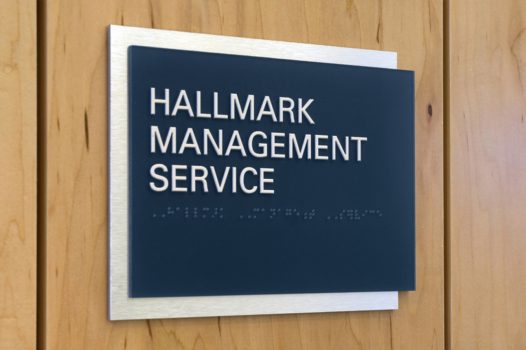Speaking Many Languages
Having the right information in place is more than just saying “we need a sign over here.”
The addition of multi-lingual messages and pictograms incorporated into signage can aid in reaching more diverse audiences. Learn where and how to effectively communicate information to both visitors and staff.
Achieving Optimal Visibility
Using high-contrast colors and appropriate font options will maximize the visibility and legibility of a sign’s message.
ASI’s online LRV Calculator allows clients to test color combinations of our standard colors to determine the highest contrast for your signs.
ADA Standards for Accessible Design
The Americans with Disabilities Act (ADA) was signed into law in July 1990, with enforcement of the law beginning in July 1991. The intent of the law is to broadly protect the civil rights of the disabled, prohibiting discrimination in employment and access to goods and services – part of this law extends to ADA signs.
The Department of Justice published revised final regulations implementing the Americans with Disabilities Act (ADA) for title II and title III on September 15, 2010, in the Federal Register. These requirements, or rules, clarify and refine issues that have arisen over the past 20 years and contain new and updated requirements, including the 2010 Standards for Accessible Design, “2010 Standards”).
March 15, 2012, was the compliance date for using the 2010 Standards for new construction, alterations, program accessibility, and barrier removal. Please note that some states and municipalities are permitted to adopt accessibility codes that are even more stringent than the 2010 Standards, as long as they minimally meet the 2010 Standards and obtain approval from the U.S. Department of Justice.




